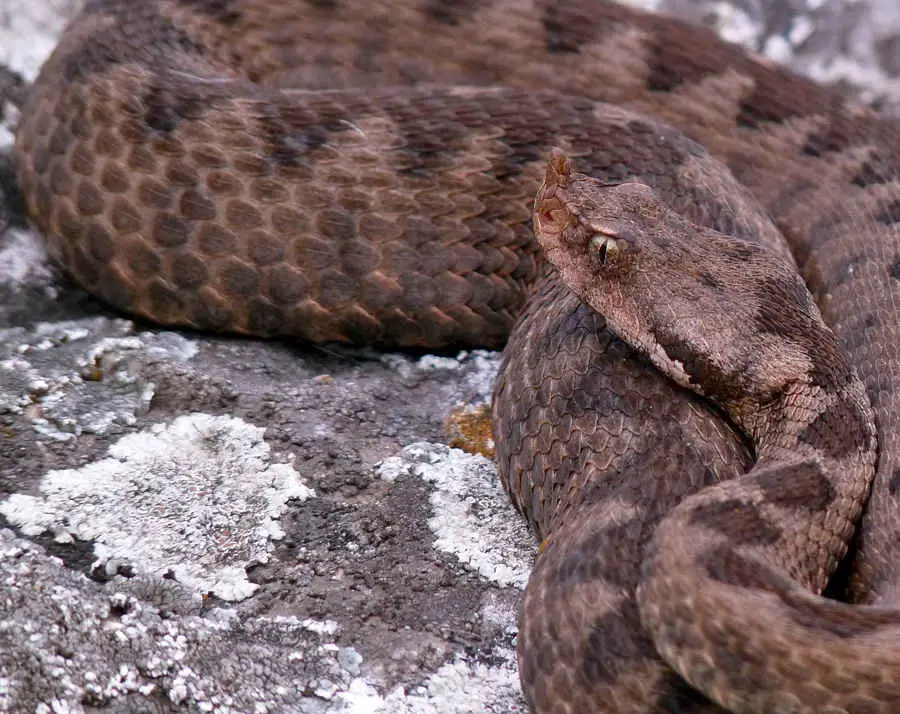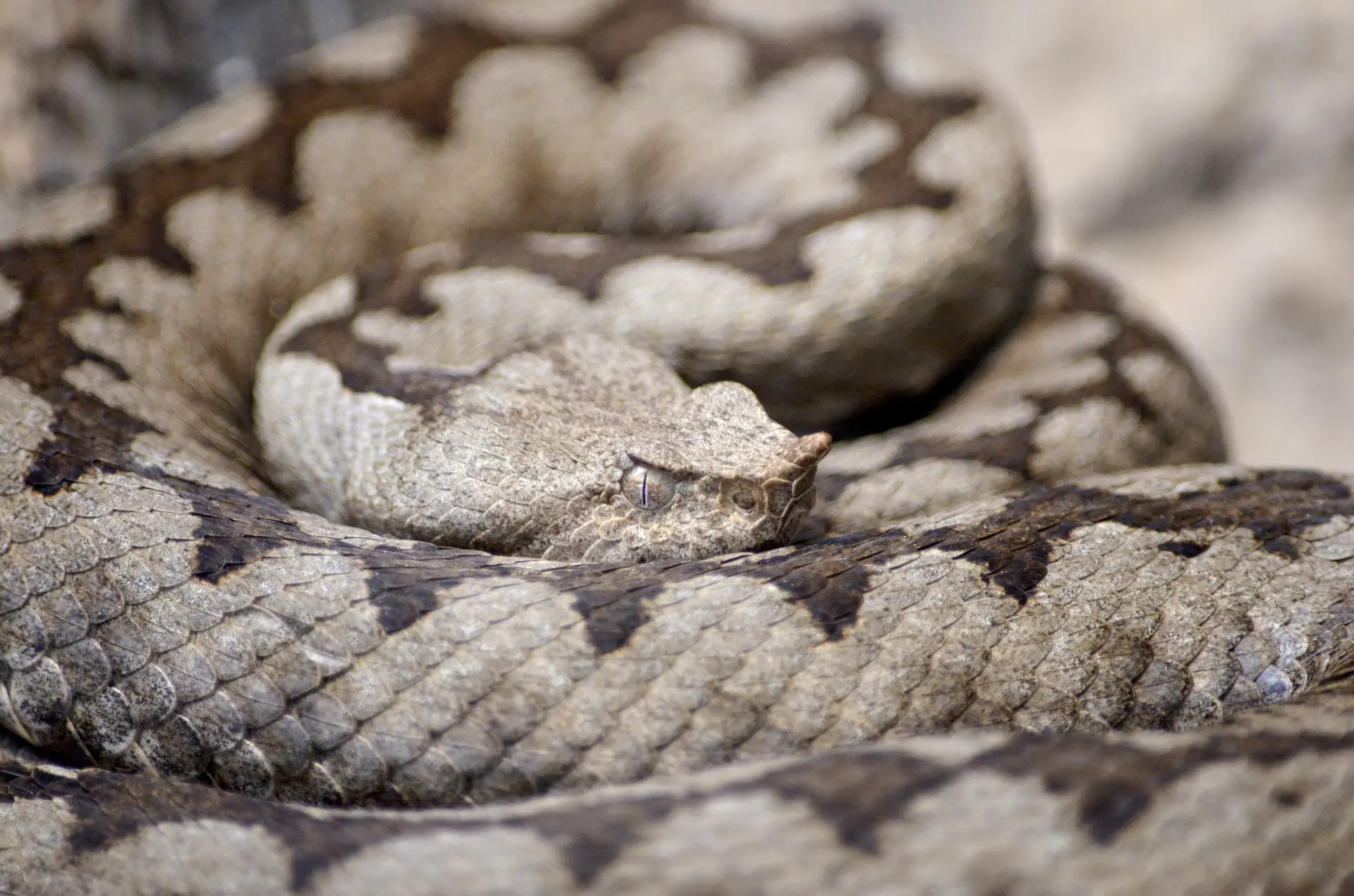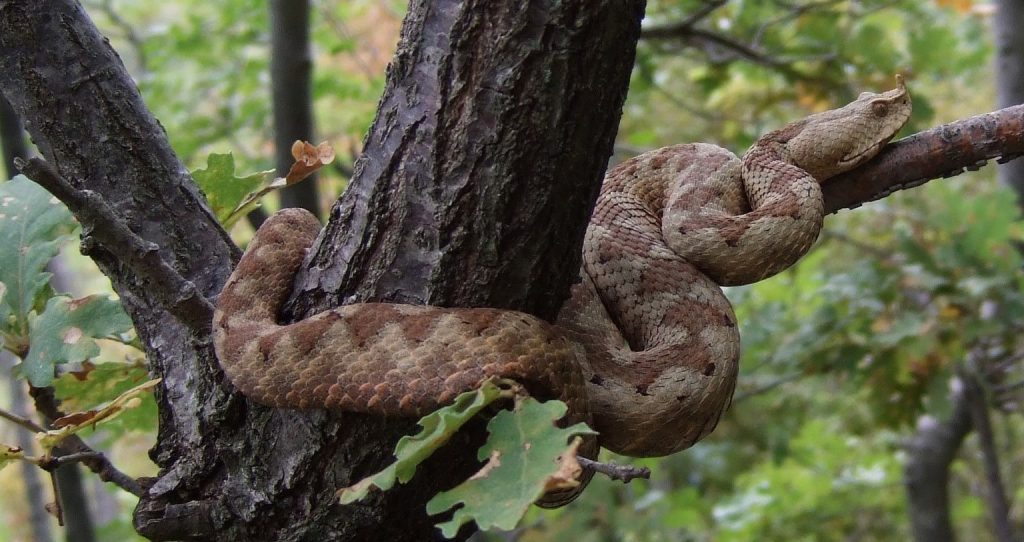October 26, 2020 – One of the largest Poskok vipers has been spotted in the area around Vodice, another was filmed hanging from a tree
Autumn in Croatia is the time of harvest, when the land gives up its bounty in preparation for winter and spring renewal. Those taking part in the harvest near the Dalmatian town of Vodice are sure to be extra vigilant over forthcoming days as local media has reported sightings of poskok vipers in the local.
One local resident detailed to infovodice.com that they had seen a specimen of almost 100cm in length. This is the maximum size an adult can reach (they are usually only around 85cm). Another of the poskok vipers was filmed hanging from a tree.
Vipera ammodytes is known as the poskok in Croatia. This species of viper is only found in southern Europe and parts of the Middle East. Although commonly called the sand viper, it actually prefers to live on dry, rocky hillsides with sparse vegetation, although it can be found on the edges of woodland and in woodland clearings.
The most northerly regions in which poskok vipers can be found are southern Austria, north-east Italy and Slovenia. They can be found as far east as Georgia, Syria and eastern Turkey. They are most commonly found within the countries of the Balkan peninsula.
 © Plamen Grigorov
© Plamen Grigorov
In Croatia, it’s possible to find them living throughout Dalmatia and Istria, on the islands of Krk, Pag, Vir, Ugljan, Pašman, Korčula, Hvar, Brač and Mljet and in the continental regions of Lika, Medvednica, Žumberak, Banovina, Kordun, Gorski kotar, Kalnik, Zagora and Hrvatsko Zagorje.
Poskok vipers are a protected species in Croatia. Although they carry the deadliest venom of any snake to be found in Europe, they do not usually attack people unless provoked. However, they can be provoked unwittingly.
Depending on the region and the temperature, in the autumn months, the snakes can climb into trees. They do so to keep warm and to hunt for birds which, alongside small mammals and lizards, form the base of their diets. They hunt larger prey by first biting with their venom, then tracking the poisoned prey until it succumbs to the bite.
 © Andrea Bohl
© Andrea Bohl
People are at particular risk to the vipers while they are in the trees as they can unknowingly walk close enough to the snake to make it feel threatened. Between August and the end of October, female poskok vipers give birth.
Poskok vipers can react unpredictably when they feel they are in danger. Some remain motionless and hiss loudly, some hiss and then flee, while still others will immediately attempt to bite. It is this unpredictability that gives poskok vipers their Croatian name – poskok meaning ‘jumping’ snake. The snake doesn’t actually jump, but it can strike and bite faster than any other European snake. It coils itself over the back of its body and then throws its front towards its victim and has a considerable reach when doing so, of up to 40 centimetres.
On average, bites from poskok vipers account for around 25 hospitalisations each year in Croatia. Deaths occurring as a result of a bite are these days extremely rare. Although the snakes can be mistakenly disturbed in the autumn, the most common period for poskok bites on humans in Croatia is actually between May and June. The venom of poskok vipers is used to make antidote serum used to treat bites from all European vipers. Poskok vipers are farmed in some parts of Europe specifically for this purpose.
For the latest travel info, bookmark our main travel info article, which is updated daily.
Read the Croatian Travel Update in your language – now available in 24 languages.
Join the Total Croatia Travel INFO Viber community.











